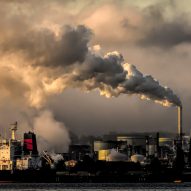 September 19, 2023 12:00 am
Published by Climate Extremes
September 19, 2023 12:00 am
Published by Climate Extremes
We can expect more intense and frequent El Niño and La Niña events.
 August 1, 2023 2:18 pm
Published by Climate Extremes
August 1, 2023 2:18 pm
Published by Climate Extremes
Climate and tech experts come together to lower barriers with Earth Virtualization Engines (EVE).
 July 19, 2023 1:35 pm
Published by Climate Extremes
July 19, 2023 1:35 pm
Published by Climate Extremes
Ocean models are important because the ocean acts as a buffer for climate change. It does this by absorbing heat and carbon dioxide associated with human activities. Ocean models are a useful tool to study the ocean and to understand how it is changing. Understanding ocean circulation around Antarctica is critical to understanding global sea level rise and the 3-dimensional circulation of the global ocean. Unfortunately, observations of this very remote region are limited. Ocean models are therefore a crucial tool... View Article
 July 19, 2023 1:10 pm
Published by Climate Extremes
July 19, 2023 1:10 pm
Published by Climate Extremes
A Weather Forecast Model is used to forecast the weather of tomorrow, or a few days into the future. The model uses detailed information from satellites, surface observations, aircraft and ships to produce the best possible knowledge of the atmosphere, ocean and land. These observations are brought together in the form of an initial state for the model and this initial state is evolved forward in time on a large computer system for a number of days. One of the... View Article
 July 18, 2023 1:15 pm
Published by Climate Extremes
July 18, 2023 1:15 pm
Published by Climate Extremes
Climate models are continuously evolving and improving, becoming more skilful tools that provide us with an indication of what our future may look like. Climate models have improved over time. The figure below shows the projected global temperature change from various models, since the early 1970s, and how the observations compared to the models. Although some models show higher or lower warming than observed, climate models have proved to be generally in agreement with observations. All the models show surface... View Article
 July 18, 2023 1:10 pm
Published by Climate Extremes
July 18, 2023 1:10 pm
Published by Climate Extremes
Global climate models (GCM) are limited to looking at large scale processes providing information at a 50 – 250 km scale, whereas decision makers are typically looking at how impacts will be experienced at a local level. Researchers use a process called ‘downscaling’ to look at regional climate influences and information such as topography at a local scale. Different methods are used on Global Climate Model outputs to translate the information to finer resolutions. The most commonly used methods are... View Article
 July 18, 2023 1:06 pm
Published by Climate Extremes
July 18, 2023 1:06 pm
Published by Climate Extremes
All models have a bias. Bias occurs because models are a mathematical representation of a highly complex system which is a simplification of the reality of many processes. Models can have bias because of limiting spatial resolution or incomplete knowledge of how a process works. For example, some climate models estimate the timing of the monsoon arrival to be earlier than expected in reality. This can lead to outputs of temperatures being too high or too low and can give... View Article
 July 18, 2023 1:01 pm
Published by Climate Extremes
July 18, 2023 1:01 pm
Published by Climate Extremes
Shared Socioeconomic Pathways (SSPs) describe five broad socioeconomic trends that could shape future society including assumptions on energy use, population levels, education and technology as well as the level of ambition for mitigating climate change. This is translated into scenarios of greenhouse gas emissions with projections from scenarios. Shared Socioeconomic Pathways were developed to give a general view of future climate policy impacts for a range of possible climate futures. The Shared Socioeconomic Pathways are:
 July 18, 2023 12:55 pm
Published by Climate Extremes
July 18, 2023 12:55 pm
Published by Climate Extremes
Representative Concentration Pathways (RCPs) are levels of radiative forcing (or levels of energy that enter the atmosphere) that correspond to different levels of greenhouse gases emitted to the atmosphere from human activities. Representative Concentration Pathways are useful ways to plan adaptation to various levels of greenhouse gases. Models can be thought of as running, ‘what if?’ scenarios i.e., a range of plausible outcomes. The output can help to understand long-term consequences of policy for decision-makers. Each pathway corresponds to a... View Article
 July 18, 2023 12:50 pm
Published by Climate Extremes
July 18, 2023 12:50 pm
Published by Climate Extremes
An ensemble is a group of climate model simulations used to understand a problem by representing many different possible future scenarios. Due to uncertainties in the parametisations and internal climate variability, single model runs can produce different outcomes which can help understand elements of our climate. Using a single model can show how changed initial conditions affect an outcome. The most well-known ensemble of opportunity is the Coupled Model Intercomparison Project (CMIP) directed by the World Climate Research Program. CMIP... View Article










